Abstract
A method is described for isolating Clara cells from the mouse lung that does not require the technique of elutriation. Mouse lungs totally perfused of blood are instilled with crystalline trypsin (0.25%) and incubated for the optimum time of 15 min. The lung tissue is chopped, mechanically agitated, and sequentially filtered to obtain a primary digest of 3 to 5 x 10(6) cells. Clara cells, identified routinely by histochemical localization of NADPH diaphorase, using the stain nitrotetrazolium blue (NBT), accounts for between 20 to 40% of the cells in the primary digest. Layering the cells of the primary digest on a discontinuous Percoll gradient followed by centrifugation gives rise to a major band of cells, 52% that are Clara cells (0.77 +/- 0.28 x 10(6)/mouse). A second method was devised to purify the Clara cells by simply centrifuging (32g, 6 min, 10 degrees C) the primary digest and discarding the supernatant that contained only a few NBT positive cells. When this process was repeated three times, the final pellet contained 68% Clara cells realizing 0.55 +/- 0.16 x 10(6) cells/mouse. The cells have typical Clara cell morphology as confirmed by electron microscopy and have a high level of P-450 enzymes (7-ethoxycoumarin deethylase and coumarin hydroxylase). Furthermore, the primary digests and the purified isolates contain less than 1% alveolar Type II cells, although such cells, identified by the histochemical localization of alkaline phosphatase, can be obtained by a second, more extensive digestion procedure. The simple procedure described for the isolation of mouse Clara cells could be further advanced if methods could be devised to prevent the loss of NADPH diaphorase activity during enzymatic digestion and cell centrifugation.
Full text
PDF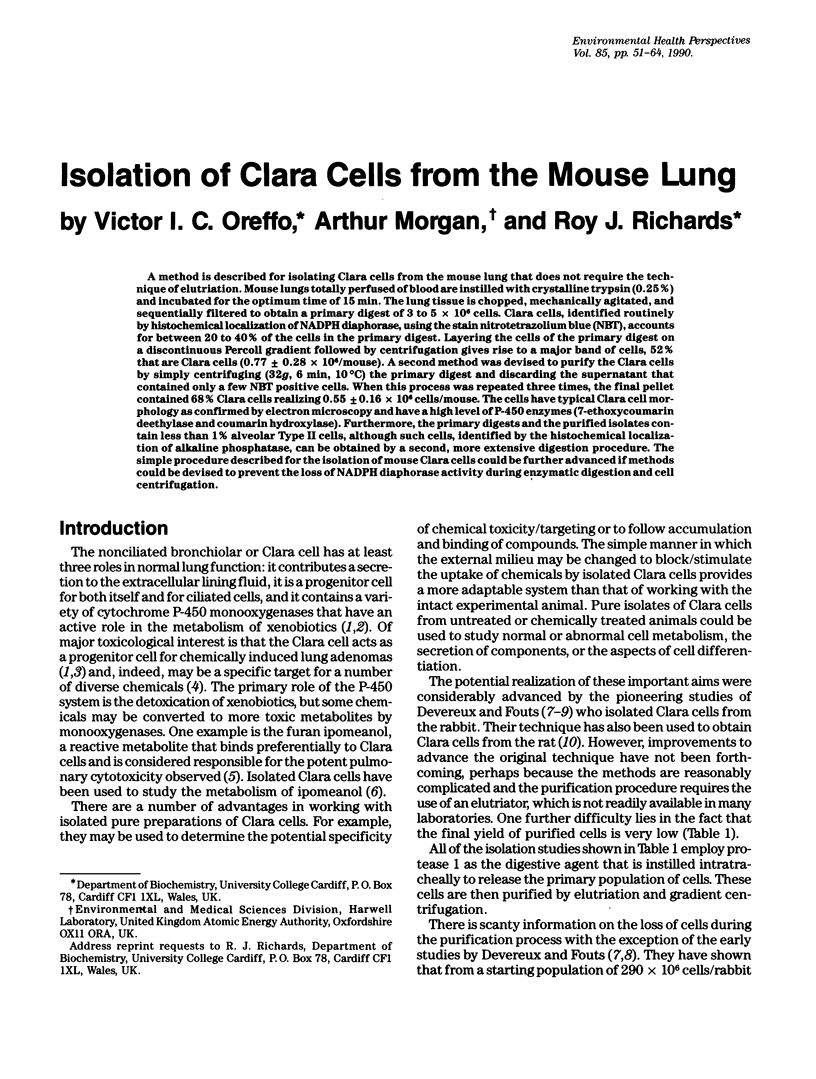
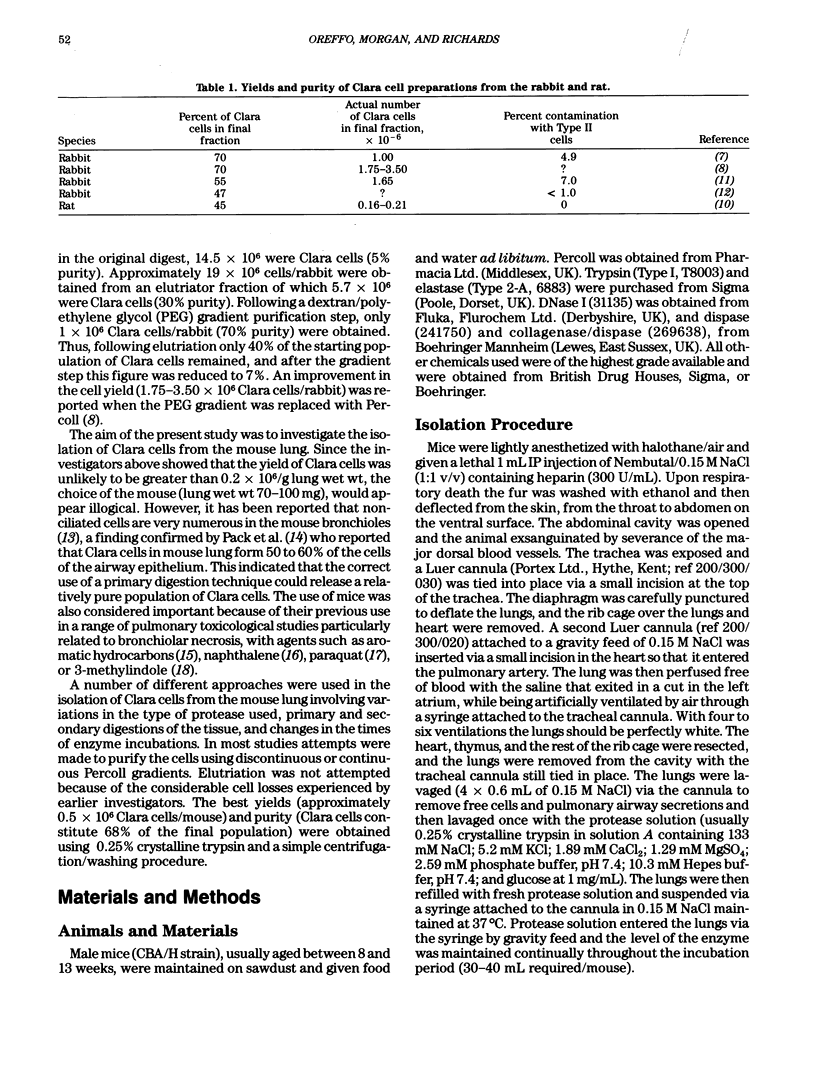
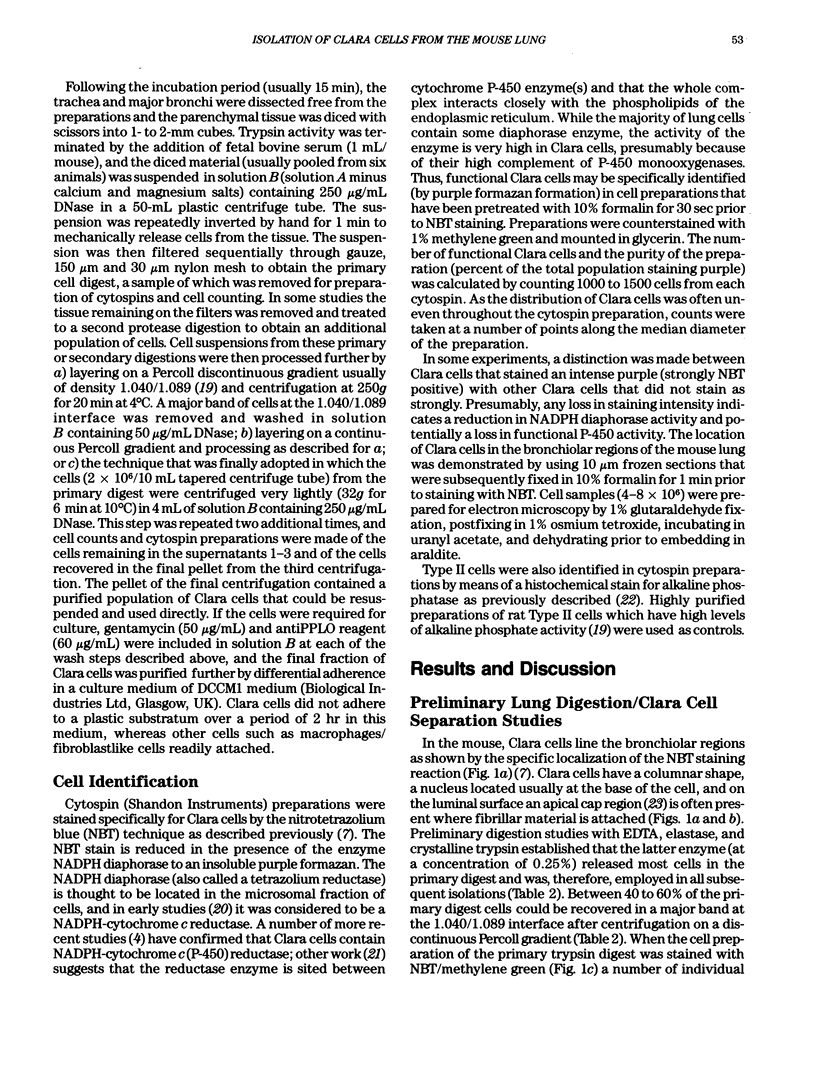
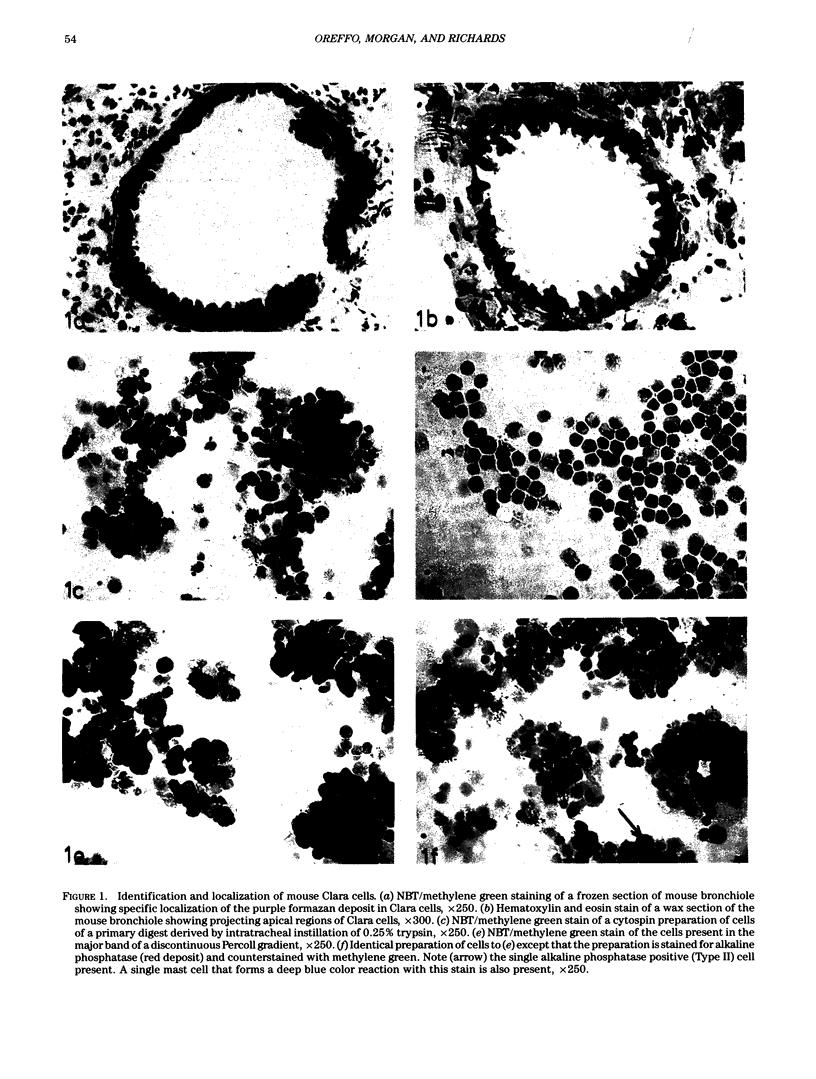
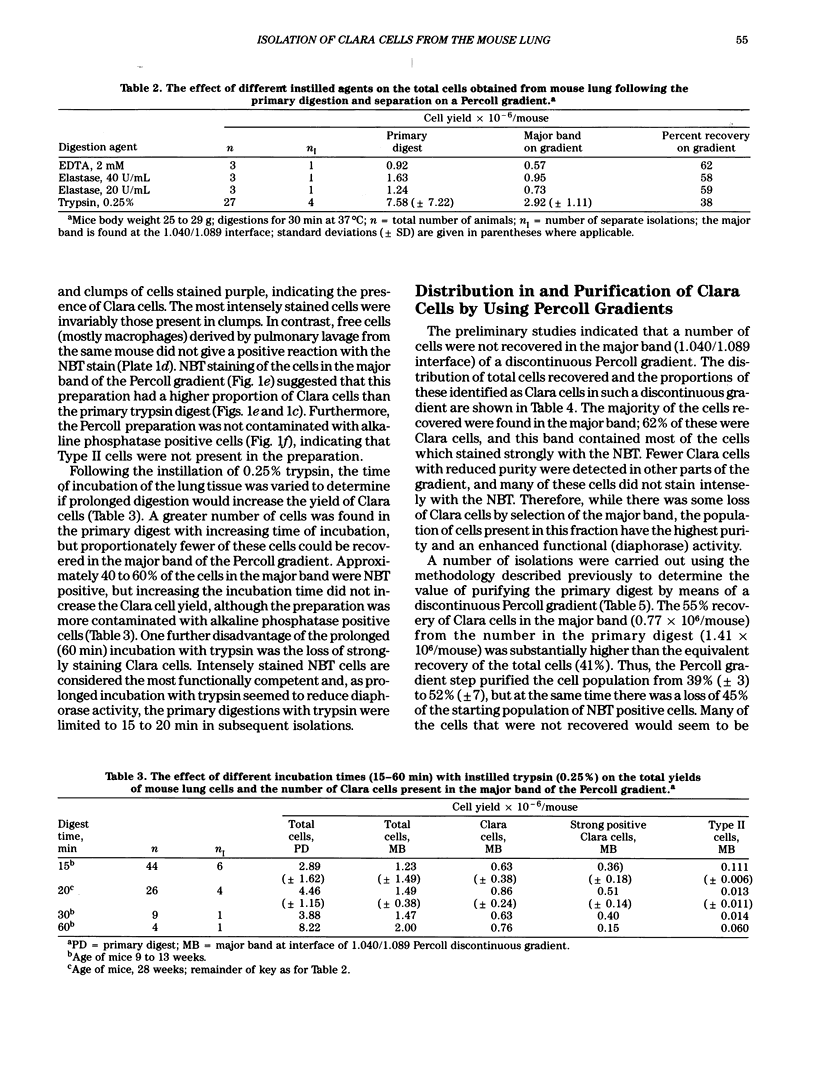
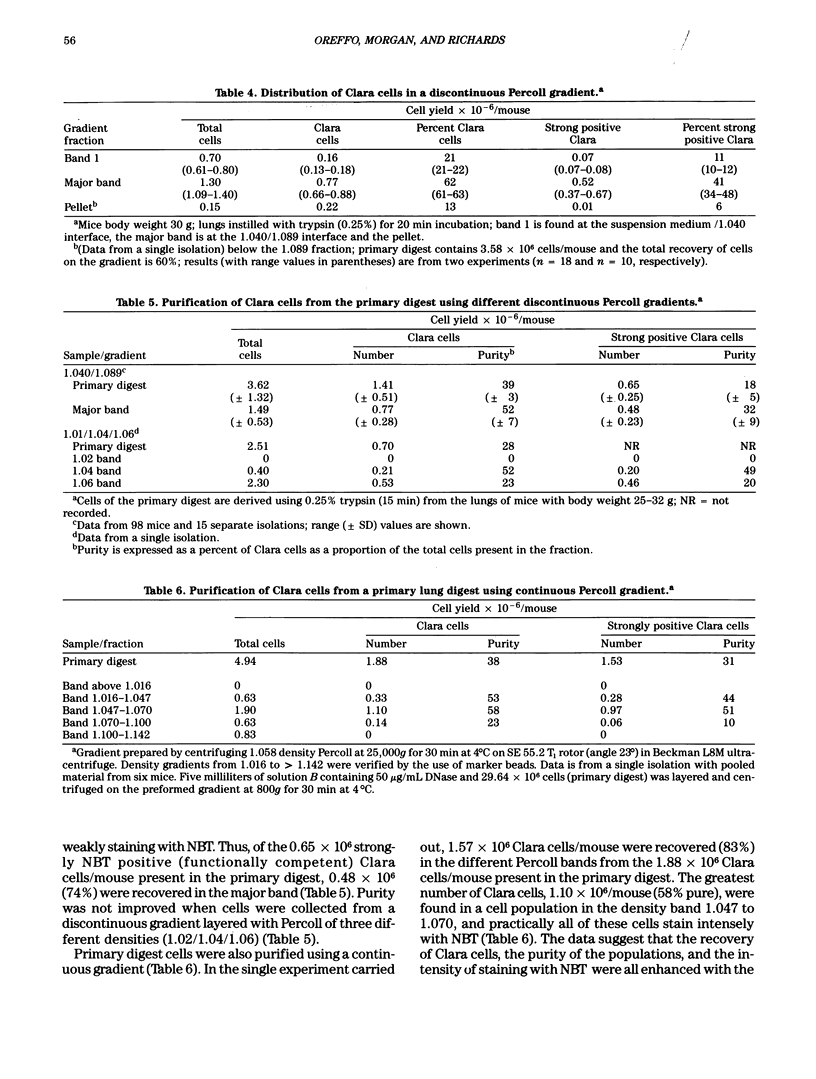
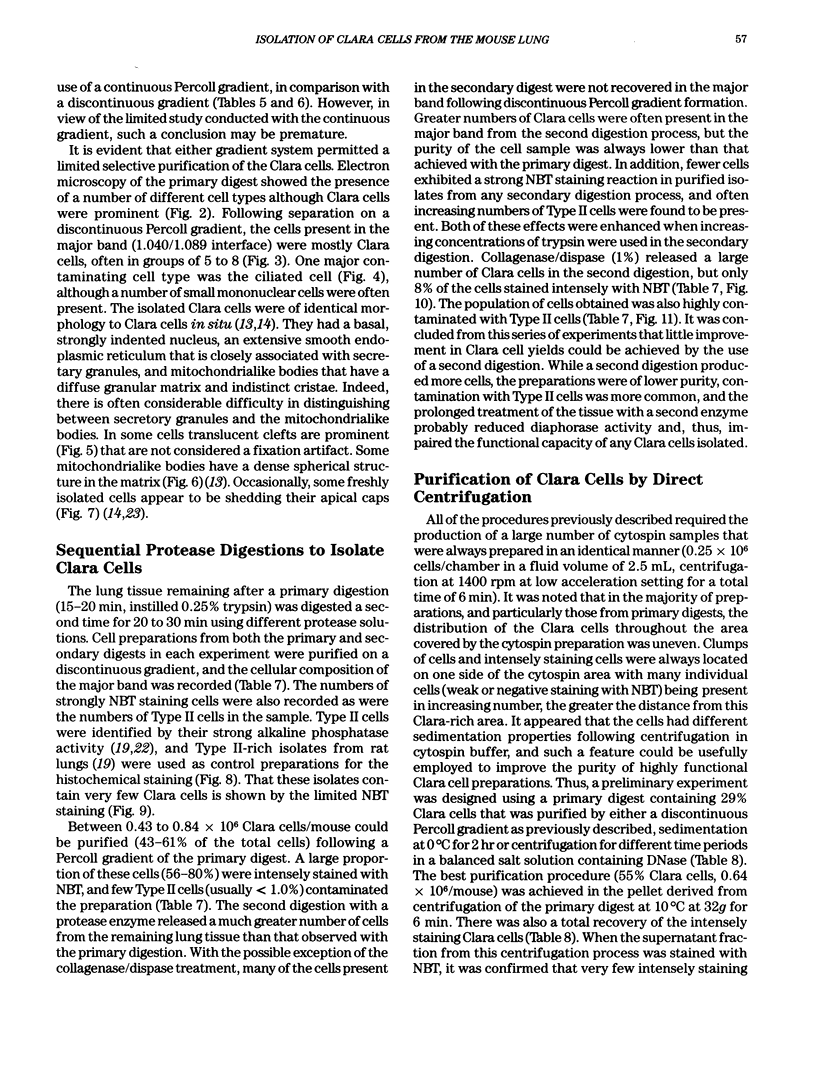
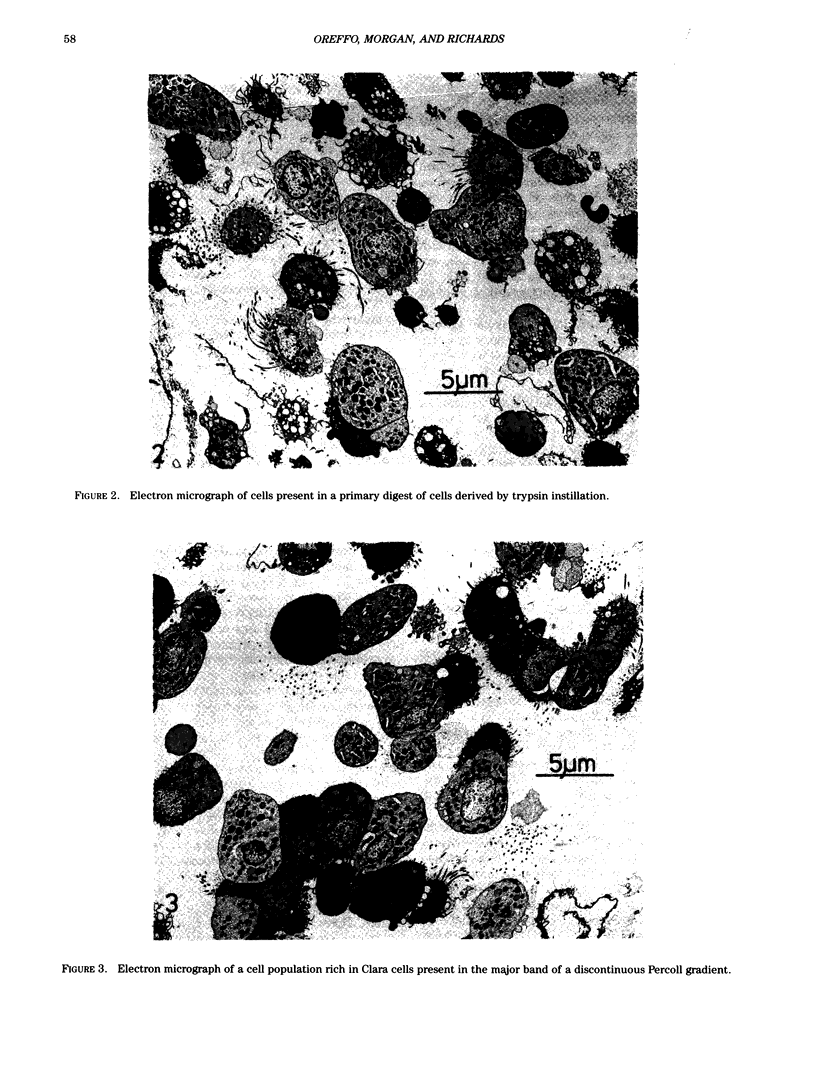
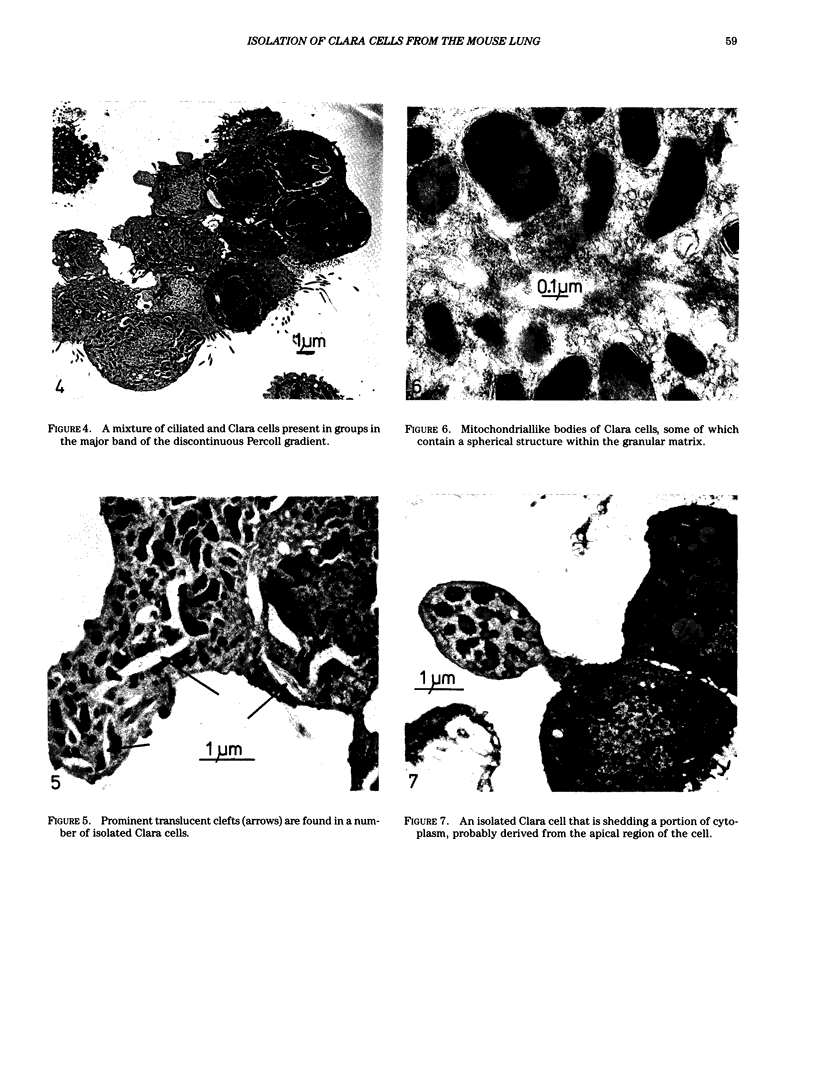
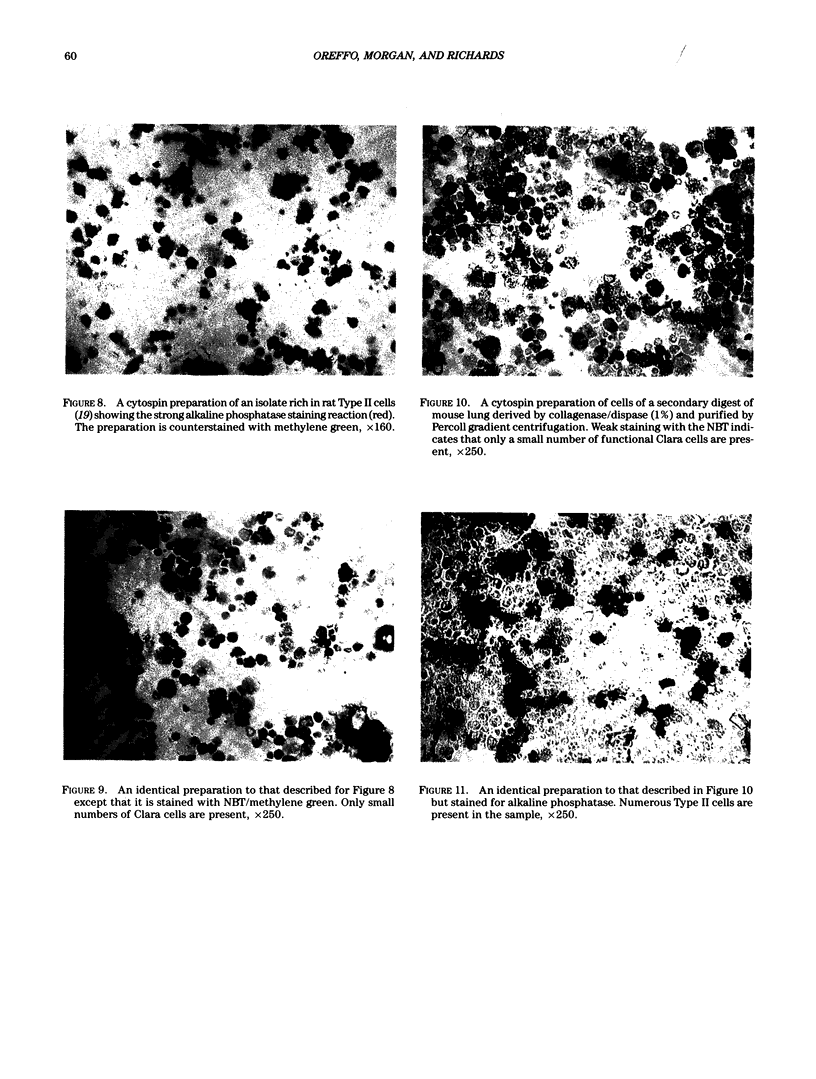
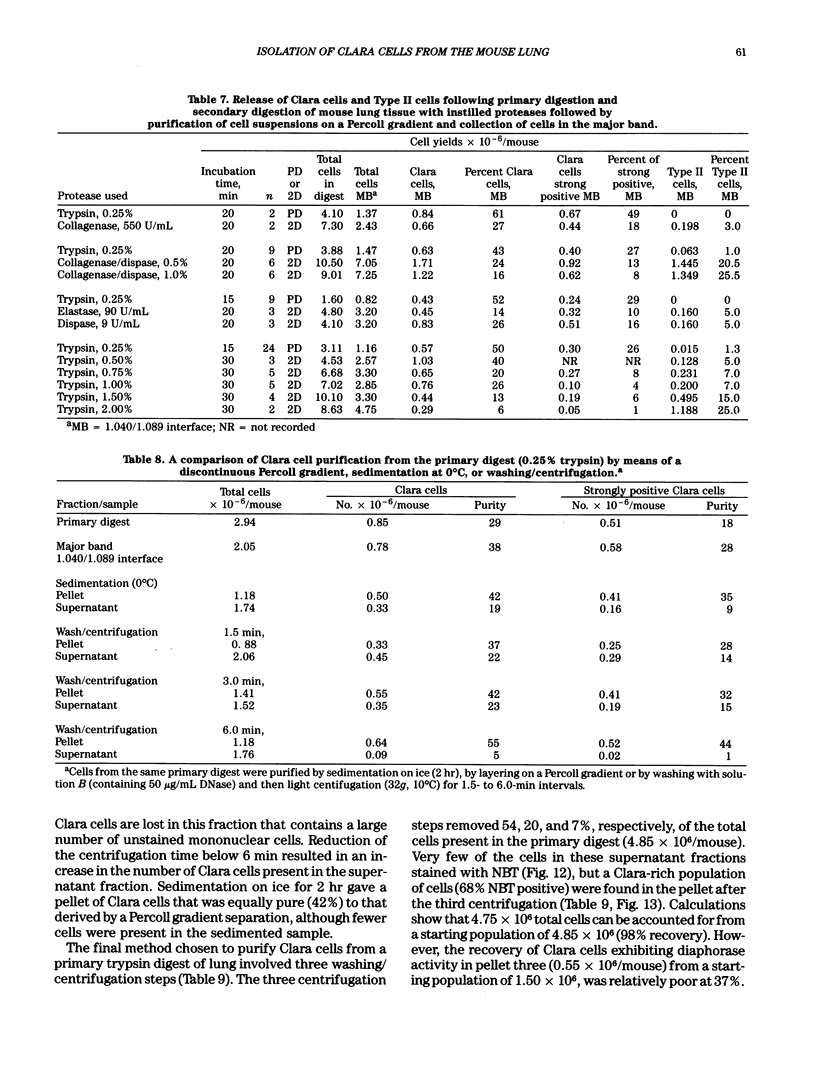
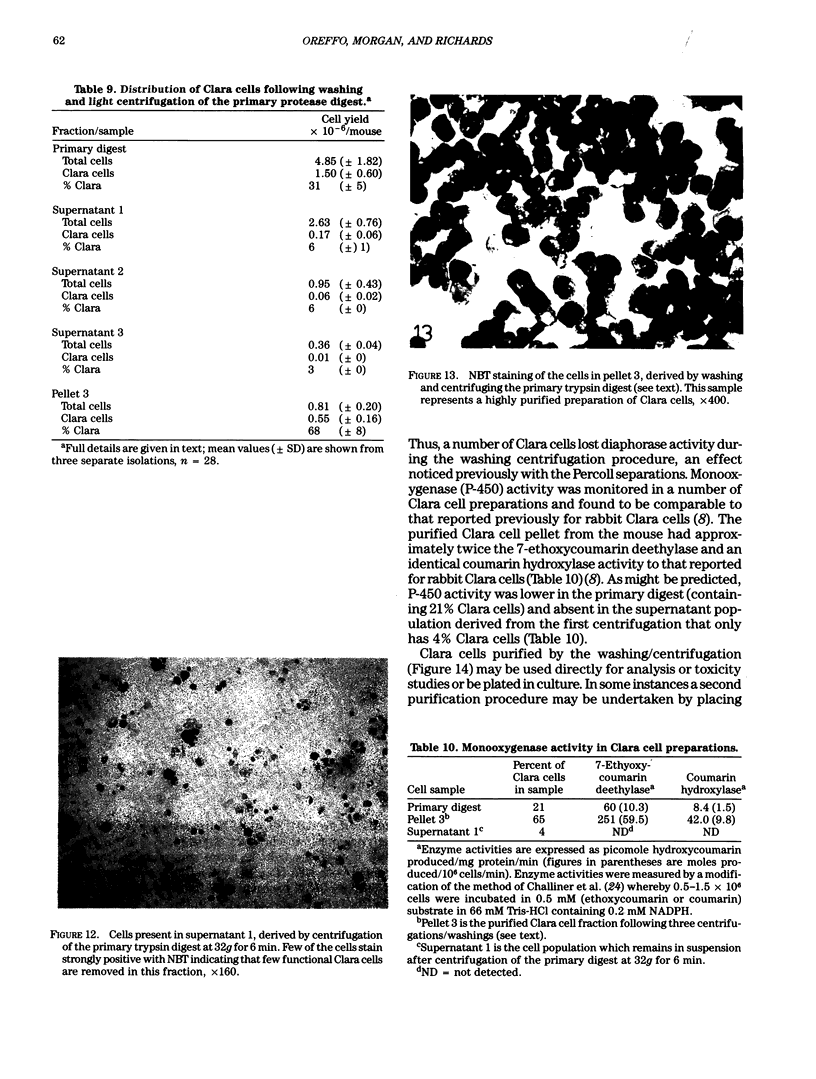
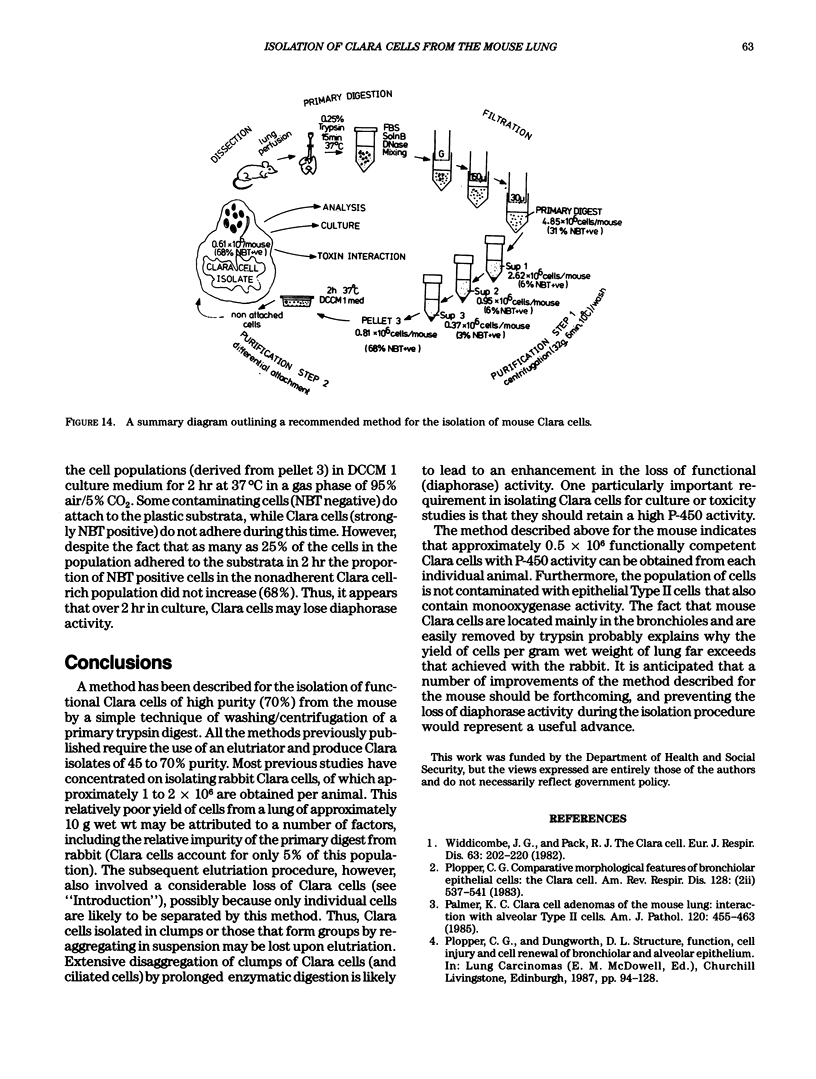
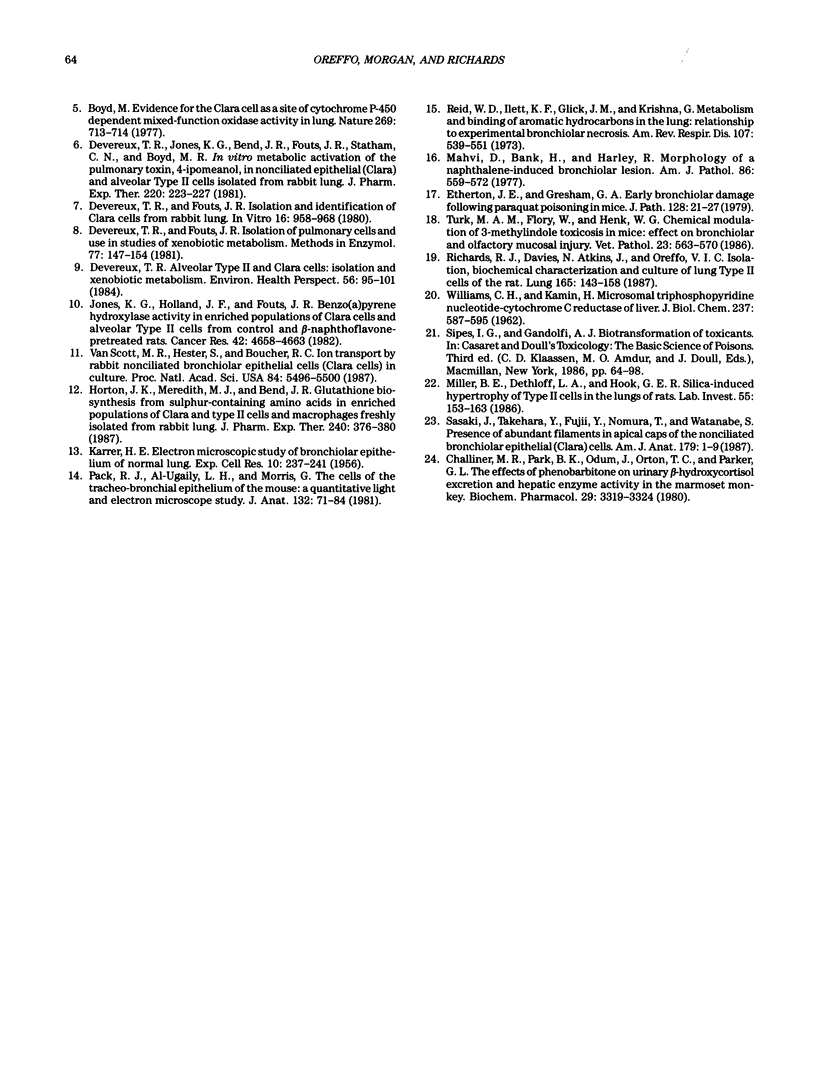
Images in this article
Selected References
These references are in PubMed. This may not be the complete list of references from this article.
- Boyd M. R. Evidence for the Clara cell as a site of cytochrome P450-dependent mixed-function oxidase activity in lung. Nature. 1977 Oct 20;269(5630):713–715. doi: 10.1038/269713a0. [DOI] [PubMed] [Google Scholar]
- Challiner M. R., Park B. K., Odum J., Orton T. C., Parker G. L. The effects of phenobarbitone on urinary 6 beta-hydroxycortisol excretion and hepatic enzyme activity in the marmoset monkey (Callithrix jacchus). Biochem Pharmacol. 1980 Dec;29(24):3319–3324. doi: 10.1016/0006-2952(80)90310-x. [DOI] [PubMed] [Google Scholar]
- Devereux T. R. Alveolar type II and Clara cells: isolation and xenobiotic metabolism. Environ Health Perspect. 1984 Jun;56:95–101. doi: 10.1289/ehp.845695. [DOI] [PMC free article] [PubMed] [Google Scholar]
- Devereux T. R., Fouts J. R. Isolation and identification of Clara cells from rabbit lung. In Vitro. 1980 Nov;16(11):958–968. doi: 10.1007/BF02619334. [DOI] [PubMed] [Google Scholar]
- Devereux T. R., Fouts J. R. Isolation of pulmonary cells and use in studies of xenobiotic metabolism. Methods Enzymol. 1981;77:147–154. doi: 10.1016/s0076-6879(81)77019-8. [DOI] [PubMed] [Google Scholar]
- Devereux T. R., Jones K. G., Bend J. R., Fouts J. R., Statham C. N., Boyd M. R. In vitro metabolic activation of the pulmonary toxin, 4-ipomeanol, in nonciliated bronchiolar epithelial (Clara) and alveolar type II cells isolated from rabbit lung. J Pharmacol Exp Ther. 1982 Jan;220(1):223–227. [PubMed] [Google Scholar]
- Etherton J. E., Gresham G. A. Early bronchiolar damage following paraquat poisoning in mice. J Pathol. 1979 May;128(1):21–27. doi: 10.1002/path.1711280105. [DOI] [PubMed] [Google Scholar]
- Horton J. K., Meredith M. J., Bend J. R. Glutathione biosynthesis from sulfur-containing amino acids in enriched populations of Clara and type II cells and macrophages freshly isolated from rabbit lung. J Pharmacol Exp Ther. 1987 Feb;240(2):376–380. [PubMed] [Google Scholar]
- Jones K. G., Holland J. F., Fouts J. R. Benzo(a)pyrene hydroxylase activity in enriched populations of Clara cells and alveolar type II cells from control and beta-naphthoflavone-pretreated rats. Cancer Res. 1982 Nov;42(11):4658–4663. [PubMed] [Google Scholar]
- KARRER H. E. Electron microscopic study of bronchiolar epithelium of normal mouse lung; preliminary report. Exp Cell Res. 1956 Feb;10(1):237–241. doi: 10.1016/0014-4827(56)90093-3. [DOI] [PubMed] [Google Scholar]
- Mahvi D., Bank H., Harley R. Morphology of a naphthalene-induced bronchiolar lesion. Am J Pathol. 1977 Mar;86(3):558–572. [PMC free article] [PubMed] [Google Scholar]
- Miller B. E., Dethloff L. A., Hook G. E. Silica-induced hypertrophy of type II cells in the lungs of rats. Lab Invest. 1986 Aug;55(2):153–163. [PubMed] [Google Scholar]
- Pack R. J., Al-Ugaily L. H., Morris G. The cells of the tracheobronchial epithelium of the mouse: a quantitative light and electron microscope study. J Anat. 1981 Jan;132(Pt 1):71–84. [PMC free article] [PubMed] [Google Scholar]
- Palmer K. C. Clara cell adenomas of the mouse lung. Interaction with alveolar type 2 cells. Am J Pathol. 1985 Sep;120(3):455–463. [PMC free article] [PubMed] [Google Scholar]
- Reid W. D., Ilett K. F., Glick J. M., Krishna G. Metabolism and binding of aromatic hydrocarbons in the lung. Relationship to experimental bronchiolar necrosis. Am Rev Respir Dis. 1973 Apr;107(4):539–551. doi: 10.1164/arrd.1973.107.4.539. [DOI] [PubMed] [Google Scholar]
- Richards R. J., Davies N., Atkins J., Oreffo V. I. Isolation, biochemical characterization, and culture of lung type II cells of the rat. Lung. 1987;165(3):143–158. doi: 10.1007/BF02714430. [DOI] [PubMed] [Google Scholar]
- Turk M. A., Flory W., Henk W. G. Chemical modulation of 3-methylindole toxicosis in mice: effect on bronchiolar and olfactory mucosal injury. Vet Pathol. 1986 Sep;23(5):563–570. doi: 10.1177/030098588602300504. [DOI] [PubMed] [Google Scholar]
- Van Scott M. R., Hester S., Boucher R. C. Ion transport by rabbit nonciliated bronchiolar epithelial cells (Clara cells) in culture. Proc Natl Acad Sci U S A. 1987 Aug;84(15):5496–5500. doi: 10.1073/pnas.84.15.5496. [DOI] [PMC free article] [PubMed] [Google Scholar]
- WILLIAMS C. H., Jr, KAMIN H. Microsomal triphosphopyridine nucleotide-cytochrome c reductase of liver. J Biol Chem. 1962 Feb;237:587–595. [PubMed] [Google Scholar]
- Widdicombe J. G., Pack R. J. The Clara cell. Eur J Respir Dis. 1982 May;63(3):202–220. [PubMed] [Google Scholar]




















